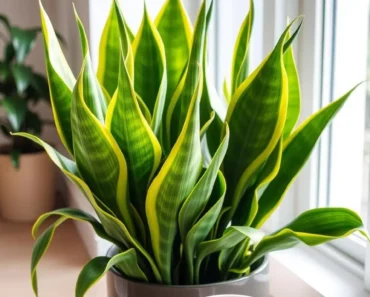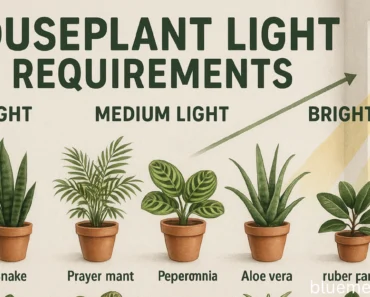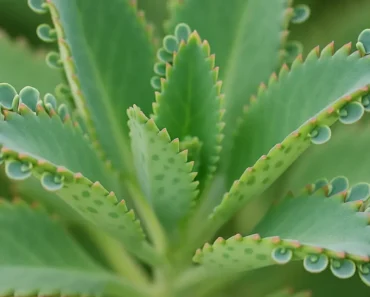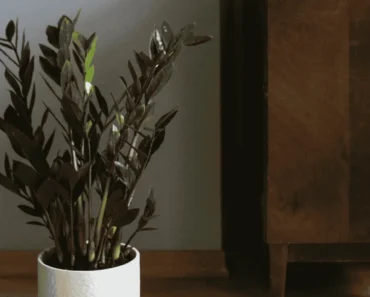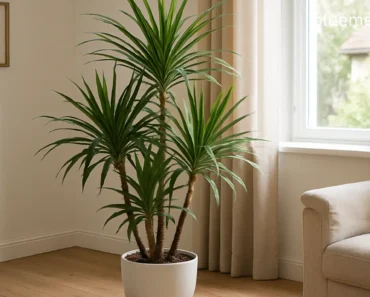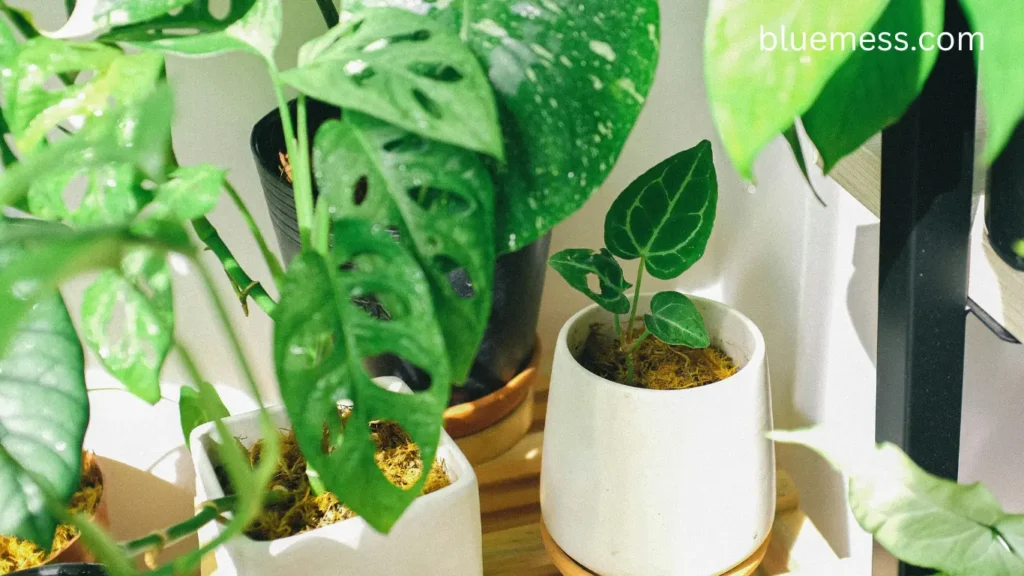
Top 10 Low-Light House Plants
Bringing Nature Indoors (Even When Your Place is Basically a Cave)
We all want that Pinterest-worthy jungle vibe at home, right? And good news: science backs us up. Houseplants lower stress, boost happiness and productivity, and even clean your air. Pretty sweet deal if you ask me.
But here’s the thing – and I know you’ve been there – most of us don’t live in sun-drenched lofts with floor-to-ceiling windows. Nope. We’re dealing with that one sad window that faces another building, or maybe you’re stuck in a basement apartment wondering if plants can survive on Netflix glow alone (spoiler: they can’t, but we’re getting close!).
If you’ve watched a plant struggle in a dim living room, you’re not alone. Finding plants for apartments with lousy lighting can feel impossible. But good news: I’ll show you shade-tolerant houseplants that actually thrive in low light and make your place look great. Trust me, by the end, you’ll be running a jungle—no matter how dim your space is.
So What the Heck Does “Low Light” Actually Mean?
Before we dive into the good stuff (aka the plants that won’t die on you), let’s talk about what “low light” really means. Because honestly, plant care instructions can be super confusing.
Low light basically means no direct sun is hitting your plants. Think about it like this:
- Anywhere more than 10 feet from a window? Low light.
- Got north-facing windows? Yep, low light.
- Is your couch, bookshelf, or that pile of laundry blocking the window? Low light city, baby.
- Living in a windowless room? Well, that’s tough, but even plants need SOME light to survive.
Most people don’t realize there’s a big difference between a plant that survives and one that thrives. Lots can hang on in low light for a while, but far fewer will actually grow and look good. And let’s be honest—nobody wants limp, pity plants. We want thriving, happy ones!
Here’s my favorite test: if you’d struggle to read a book in that spot without squinting, your plant’s probably gonna struggle too. Just remember – low light doesn’t mean pitch black. Even the most shade-loving plants need a little something to work with.
Table of Contents
The Secret Life of Shade-Loving Plants (It’s Actually Pretty Cool)
Some plants are basically vampires that thrive in the dark while others need sun like they’re on a permanent beach vacation. It’s all about where they come from!
Most beginner-friendly shade-loving houseplants come from rainforest floors—under massive trees with minimal light. These plants evolved clever tricks to maximize the little light available.
First off, they’re photosynthesis ninjas. Check this out:
- They grow HUGE leaves to catch every bit of light possible.
- Those thick, waxy, dark green leaves? They’re not just for show – solid green leaves are way better at photosynthesizing than those fancy variegated ones
- They’re basically the tortoises of the plant world – slow and steady wins the race. They grow super slowly so they don’t need much energy
- Some plants, like Snake Plants, even have this special photosynthesis trick (fancy name: CAM) that lets them be super efficient with tiny amounts of light
Oh, and here’s another cool thing – lots of these plants are also drought-tolerant. They store water in their thick leaves and roots like little plant camels. This is perfect because in low light, soil stays wet forever (seriously, it’s annoying), so plants that don’t need much water are ideal.
The All-Stars: My Top Low-Light Plant Picks That’ll Actually Survive Your Place
1. ZZ Plant (or as I call it, the “Zombie Zombie” Plant)
Why it rocks: This thing is basically indestructible. I’m pretty sure it could survive a nuclear apocalypse. The ZZ Plant doesn’t care if you forget about it for weeks, water it with coffee by accident, or stick it in the darkest corner of your apartment. Those thick, waxy leaves are like little solar panels designed to work in terrible lighting. Pro tip: the ‘Raven’ variety looks super goth and cool with its almost-black leaves.
Key takeaway: Less is more for the ZZ Plant. Wait for the soil to become bone dry before watering again, and keep the leaves free of dust to maximize light absorption.
2. Snake Plant (The Plant That Refuses to Die)
Why it rocks: People call this “mother-in-law’s tongue” which… yikes. But it really is almost impossible to kill. Snake Plants have this weird photosynthesis thing that lets them survive in stupidly low light. They basically go into hibernation mode when it’s dark, which is pretty smart if you ask me.
Key takeaway: Water your Snake Plant only when the soil is completely dry, especially in winter (every 4-6 weeks). If possible, let it enjoy some indirect sunlight during summer for extra growth.
3. Jade Pothos (The Basic B*tch of Plants, But in a Good Way)
Why it rocks: This is like the plain vanilla ice cream of pothos – no fancy variegation, just solid green goodness. And you know what? That’s exactly why it kicks ass in low light. It’s super chill about everything – water, humidity, temperature, whatever. Perfect for plant newbies or lazy people (no judgment).
How to not kill it: Water when the soil’s pretty much dry – maybe every week or two. Cut it back when it gets leggy (all stringy and weird looking) to keep it bushy and cute.
4. Cast Iron Plant (Literally Named After How Tough It Is)
Why it rocks: This plant’s name tells you everything. It’s tough as nails and thrives on neglect. In nature, it grows in super dark forests, so your dim apartment is basically a luxury resort for it. Bonus: it actually likes fluorescent lights, so it’s perfect for sad office cubicles.
Key takeaway: Only water your Cast Iron Plant when the soil is very dry. Clean the big leaves occasionally for better health.
5. Peace Lily (The Drama Queen That Tells You What It Needs)
Why it rocks: One of the few plants that’ll actually flower in low light! How cool is that? Peace Lilies come from dark jungle floors, so they’re totally used to the shade. Plus, those glossy leaves are gorgeous.
Key takeaway: Keep Peace Lily soil slightly moist and watch the leaves for watering cues—they’ll droop when thirsty, then revive after watering.
6. Chinese Evergreen (The One With the Cool Patterns)
Why it rocks: These guys have the prettiest patterned leaves that stay colorful even in the dark. They’re super adaptable and bugs tend to leave them alone, which is always a plus in my book.
Key takeaway: Keep Chinese Evergreen soil evenly moist, spritz occasionally, and choose solid green varieties for lowest light.
7. Bird’s Nest Fern (The Weird-Looking One That’s Actually Easy)
Why it rocks: Ferns usually suck as houseplants because they’re so fussy, but this one’s different. It evolved in dark forests and will literally die if you put it in bright sun. Perfect for us cave-dwellers! It’s way less of a diva than other ferns.
How to not kill it: Never let it dry out completely – water it weekly. It LOVES humidity, so either mist it daily or stick it in your bathroom where it can enjoy your shower steam.
8. Philodendron (The Jungle Vine That Won’t Quit)
Why it rocks: These are straight-up jungle plants that naturally grow under thick tree cover. They’re super chill and just keep growing steadily even in low light. The hybrid varieties are especially tough – I’ve got a Golden Dragon that survived my two-week vacation with zero care.
How to not kill it: Let the top inch of soil dry out between waterings. Spin it around occasionally so it doesn’t grow all lopsided reaching for light.
9. Dracaena (The Tall Drink of Water)
Why it rocks: Want some height in your plant collection? Dracaenas got you covered. They grow tall and dramatic but super slowly in low light. Lucky Bamboo (surprise – it’s actually a Dracaena!) is so chill it’ll grow in just water. Mind = blown.
How to not kill it: Let the top half of the soil dry before watering. Rotate it so it grows straight, and wipe the leaves occasionally. That’s literally it.
10. Spider Plant (Your Grandma’s Favorite for a Reason)
Why it rocks: There’s a reason everyone and their grandma has a Spider Plant – they’re basically immortal. They clean your air, look cool with their stripey leaves, and make baby plants like crazy. It’s like getting free plants forever!
How to not kill it: Water when the top couple inches of soil are dry. Even if you forget and it gets crispy, it’ll probably bounce back. These things are survivors.
Pro Tips for Keeping Your Low-Light Plants Happy
Watering (AKA How Most People Murder Their Plants)
Here’s the deal – plants in low light need WAY less water than you think. Like, way less. The soil stays wet forever because there’s no sun to dry it out. Get yourself a moisture meter if you’re unsure (they’re like $10 on Amazon), or just stick your finger in the soil. If it’s wet, don’t water. Simple as that.
Humidity Hacks
Lots of these plants come from jungles where it’s basically a steam room 24/7. You can:
- Mist them (if you remember)
- Get a humidifier (your skin will thank you too)
- Group them together so they create their own little humid microclimate
- Stick them in the bathroom where they can enjoy your shower steam
Making the Most of Your Crappy Lighting
Even in low light, placement matters. Put plants as close to the light source as possible. Rotate them every couple weeks so they grow evenly. Dust your plants—clean leaves photosynthesize better.
If your place is REALLY dark (like, cave dark), maybe consider a grow light. They make some that look pretty normal now, not like you’re growing… other things.
Soil and Food
Use potting mix made for houseplants, not dirt from outside (please don’t do that). Add some perlite to make it drain better – soggy soil = dead plants. Even though these guys grow slowly, throw them some plant food during spring and summer. They’ll appreciate it.
When Things Go Wrong (Because They Will)
Yellow leaves? Either needs more light or you’re drowning it. Usually, it’s the drowning.
Getting all stretched out and weird? It’s desperately reaching for light. Rotate it more and maybe move it a tiny bit closer to a window.
Bugs? Ugh, the worst. Low light + high humidity = bug party. Check your plants regularly and deal with pests ASAP.
Root rot? This is what happens when you love your plants to death with too much water. If the soil smells funky or the plant’s getting mushy, emergency repot time!
You’ve Got This!
Look, if I can keep plants alive in my basically windowless apartment, so can you. These plants have survived millions of years in dark rainforests – they can definitely handle your living room.
Start with one or two of these champions (I’d go with a ZZ Plant or Snake Plant if you’re nervous), and once you see how easy it is, you’ll be addicted. Before you know it, you’ll be that person giving out plant babies to all your friends.
The best part? While you’re building your indoor jungle, you’re also making your space healthier and happier. It’s a win-win!
Got a favorite low-light plant I missed? Killed a plant in a spectacular way? Drop a comment below – I love a good plant fail story (we’ve all been there). Now go forth and plant shop! Your shadowy corners are waiting for some green love.
Author
George Wine is a seasoned gardening expert with over 20 years of experience in the field of horticulture. His passion for plants and nature has driven his career, where he has honed his skills in various aspects of gardening, from landscape design to plant care. George holds a Master of Science in Horticulture from the University of California, Davis (UC Davis), a prestigious institution known for its research and advancements in plant science.
Throughout his career, George has worked with a diverse range of clients, offering tailored solutions to enhance outdoor spaces and create thriving gardens. His knowledge and expertise allow him to provide invaluable advice, ensuring that both novice and experienced gardeners achieve their gardening goals. Whether you’re looking for tips on sustainable gardening practices, innovative design ideas, or advice on specific plant species, George is here to help you cultivate the garden of your dreams.

